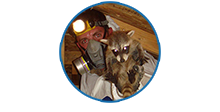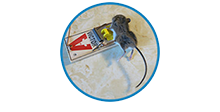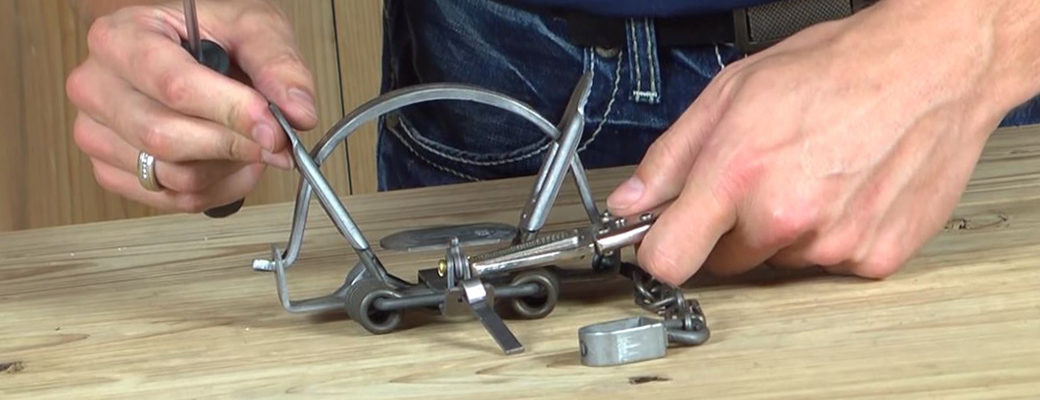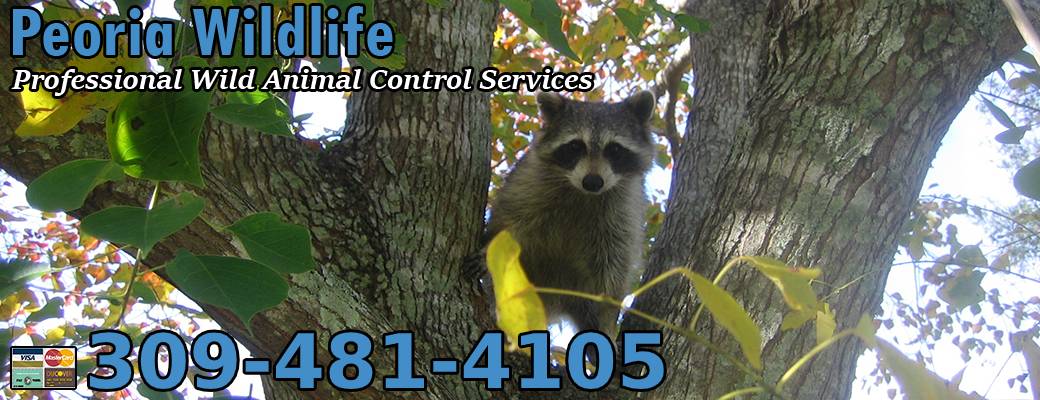Peoria Wildlife Control - 309-481-4105

Wildlife Trapping
When it's necessary to remove animals, we focus on humane and effective trapping and relocation.

Home Repairs
A critical step - the identification and repair of any and all wildlife entry points into the home.

Animals in Attic
We specialize in the removal of animals in the attic - squirrels, raccoons, rats, mice, bats, and more.

No Poisons!
We never use poisons in any part of our wildlife control, including rodent control. Poisons don't work!
We are Peoria Wildlife, and we solve conflicts between people and wild animals. From squirrels in your attic, to raccoons in your trash, to bats, rats, birds, and snakes, we do it all. We specialize in safe and effective solutions to Illinois critter problems. We service the greater Peoria region, and we offer fast service - we can usually schedule a same-day appointment. Give us a call at 309-481-4105 any time, 24/7, and we will discuss your unique wild animal problem, and give you a free price quote over the phone. We're ready to take your call now!
Our service range: We service Stark County, Marshall County, Woodford County, Tazewell County, Fulton County, Knox County, and more. We also service Chillicothe, Elmwood, West Peoria, Bartonville, Glasford, Norwood, Bellevue, Hanna City, Peoria Heights, Brimfield, Kingston Mines, Princeville, Dunlap, Mapleton, Lake Camelot, Rome, and more.
Peoria Wildlife Education: What Is A Foothold Trap?
You may hear foothold traps referred to as leghold traps as well. They are the most popular type of trap to be used in hunting and trapping. There are also several other uses for foothold traps, but you will need to be familiar with how they work before using this tool.

How They Work
Foothold traps are made up of two smooth arms which are referred to as jaws. When an animal steps on the pan within the center of the trap, it activates the jaws, causing them to spring together and grip the animal’s foot. These traps don’t have teeth, so it is simply holds the animal in place without digging into its fur or skin unnecessarily. You can find foothold traps in a range of sizes and you can use them in the water or on land. Because of the lack of teeth, it is usually possible to release an animal after catching it with this trap.
Types Of Foothold Traps
There are several different types of foothold traps in addition to the various sizes, making it possible to choose the right one for the particular animal you wish to catch. Jump or underspring traps aren’t made anymore as these are an older style. Long-spring and coil-spring traps are both common. Long-spring ones are heavy and large, making them harder to hide, but helping with underwater placements. These are ideal for smaller animals while double long-spring traps work well for larger animals. Coil-spring traps are smaller, making them good for tighter areas. These are the fastest variety of foothold traps because of their two springs. Their size, strength, and speed mean they are ideal for bobcats, coyotes, and foxes. You can also add extra springs for extra stability.
Guarded foothold traps feature a guard attachment that is spring-loaded. This prevents the animal from injuring itself in an attempt to escape or actually escaping. An enclosed foothold trap will be designed for a particular type of animal, typically an opossum or raccoon. For the trap to work, the animal has to put its foot into the small opening, meaning that there is almost no chance of catching an animal you don’t want to. Many areas of the country actually require this particular type of foothold trap for that reason.
When To Use Foothold Traps
Most foothold traps are used for those who trap or hunt animals for sport or to supplement their diet. In some cases, they can be used to catch unwanted wildlife on your property and safely remove them, but you should probably consult an expert for help with this so the animal isn’t injured.
Previous Education Articles
Common Snakes of Illinois
How do you know if you have a Peoria groundhog under your shed or porch?
What should I do with a wild Peoria animal after I catch it?
What to do about a Peoria squirrel in the fireplace


